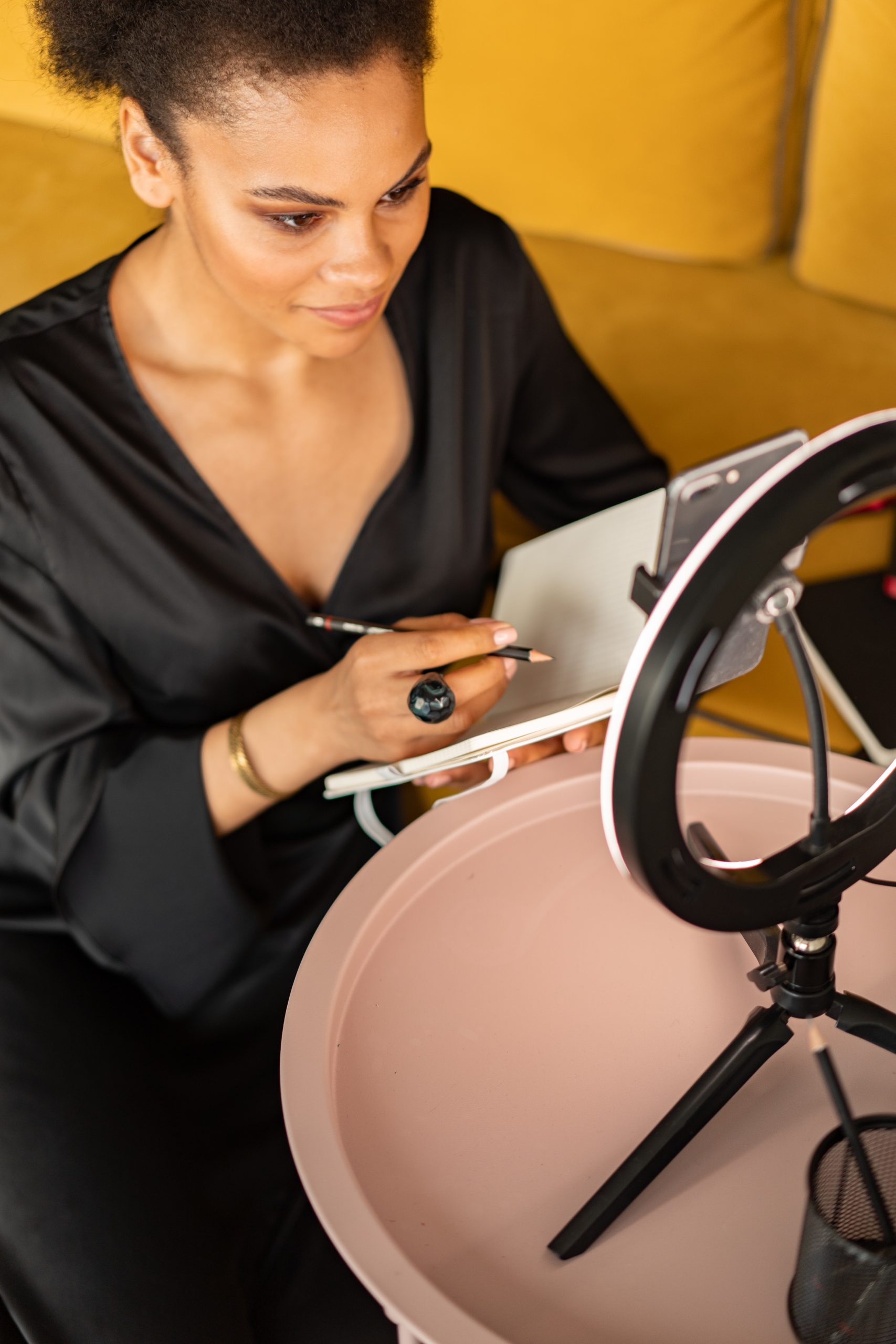By Sharon Bially | September 5, 2022
My love for writing is inseparable from a love of silence: the peaceful silence of words on a page with no other distractions. Nothing else vying for my attention, pounding in my ears, calling me out of my thoughts and my imagination.
So it was hard enough for me as a book publicist when social media, with its links to videos and all other manner of noise, emerged as a way for authors to share their work. Yet in those early days, there was still space among the links for posting only words, and people still had bandwidth for reading them.
Then came Instagram. Suddenly, all that mattered—all that people wanted to share and to see—were photos. As Instagram rose to become the “it” social media platform for authors, it paradoxically began the transformation from a place for sharing snapshots and hashtags to the place for showing mainly…videos. Gone was the silence. Soon the written word was replaced almost entirely by 60-second snippets of Instastory chatter alongside 15 minutes of pontification or laughter on IGTV.
Back in Instagram’s early years, my advice to authors asking which platforms to focus on when building an audience was: skip it. Generally, memoirs, novels and the types of business and nonfiction books my agency works with don’t lend themselves to more than a few photos: photos of the cover, of readings and events, of readers holding the book. This gets stale pretty quickly. Exceptions include cookbooks or books about topics like home decor that are built around visuals.
But Instagram’s lure was hard to resist and soon, countless authors were adding both pics and Instastories of their kids, their dogs, their dinner preparations, their weddings, their girls’ nights out…. Hair and makeup, trendy outfits, a little botox or photoshopping and filtering here and there (it’s hard to tell which is which) became part of the routine. There were no limits, it seemed to what authors—like most other humans—would do to achieve the high of looking good and getting likes and loves and shares.
That’s all fine—and fun. But it begs the question: what is this really about?
Recently Instagram announced plans to shift to an all video format to keep up with TikTok and YouTube. Yes, you heard it: no more cute pics, but LOTS of videos of varying lengths. Which means that if you’re looking to spread the word about the written word on Instagram—or, increasingly, Facebook—you’ll need, paradoxically, to use…video reels.
This paradox is driving throngs of authors to become DIY videographers and video editors. That’s wonderful if you have these skills or would enjoy learning them. After all, it’s a creative endeavor. For those who wish, there’s no shortage of apps and tools available for making snazzy looking videos. Even Canva has expanded from its traditional graphics to include video-editing. If you’re not a DIYer but still want to cross into the video realm, there are plenty of people who can help, from friends or teenage kids to professional video editors you can find through sites like Upwork or Fiverr. In a move I would never have imagined just two years ago, I’ve brought in a videographer to partner with my firm on our clients’ Instagram campaigns.
If you do choose this route, have fun, but I offer these words of caution:
Be real. Don’t engineer content to keep up with the Joneses. If a certain look or outfit or setting or tone of voice is trending, ask whether it fits who you are and what you’re striving to convey. If it doesn’t fit, don’t go there. You may have less content to post but that’s okay. There are other ways to engage.
Remember your purpose. Like all social media, Instagram can be a vortex. You take one step and before you know it, you’re sucked into a cycle of ever-more posting and clicking and liking and sharing for the sake of getting more clicks and likes and shares yourself. But ask yourself: how does this serve your writing, and your book?
If on the other hand you’re like me and prefer the silence of words on a page, or if you simply don’t see your messages translating well into video, here are some alternatives for Instagram and beyond:
Go audio-only. Instead of videos, create and post audiograms like this one. Read passages from your book. Read passages from other peoples’ books. Interview other authors. Speak the written word without filming. It’s an option—at least for now.
Get together. Covid may have put a damper for a while on in-person meetings, but they’re making a comeback—masked for now, but hopefully not forever. Book groups anyone? Author salons? Library discussions? Join a few or set some up. These are all powerful community-building tools, and can happen virtually, too. Bonus: you can post the pics and videos to Instagram.
Use email. Remember email? It’s still a highly effective means for connecting. Sending newsletters or starting ongoing group email conversations is a good way to maintain and build relationships. (I’m in an email group about “What We’re Reading This Season” that’s a little like a book club in an email trail.) Just make sure the emails are providing people with something they value, like insights, pointers or book recommendations.
Opt Out. Leave Instagram. Drop TikTok, YouTube and even Facebook. Yes, you can. Really. With the harm these platforms have been doing to young people and possibly to all, we should have no qualms about shutting our accounts. Or simply not opening them in the first place.
***
Sharon Bially (@SharonBially) is the founder and president of BookSavvy PR, a public relations firm devoted to authors and books. Author of the novel Veronica’s Nap, she’s a member of the Director’s Circle at Grub Street, Inc., the nation’s largest independent writing center, and writes occasionally for the Grub Street Daily.
ARTICLE ORIGINALLY PUBLISHED ON WRITER UNBOXED
